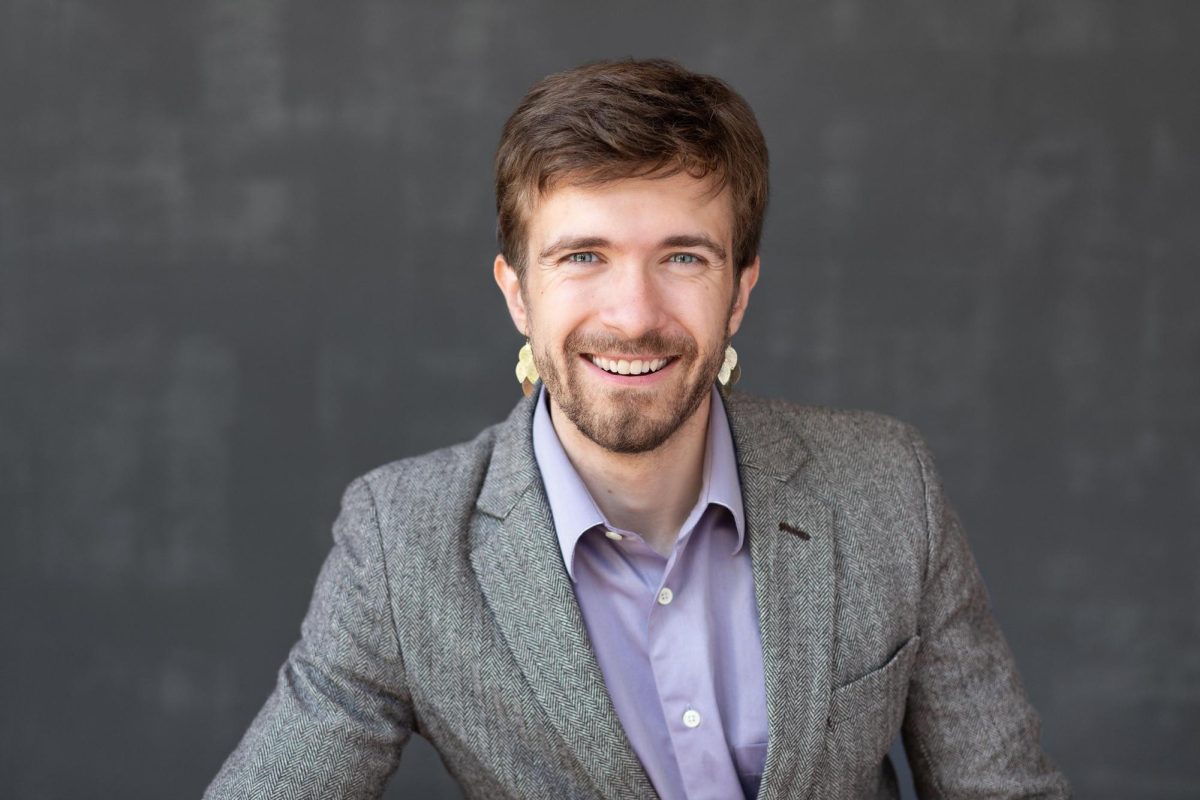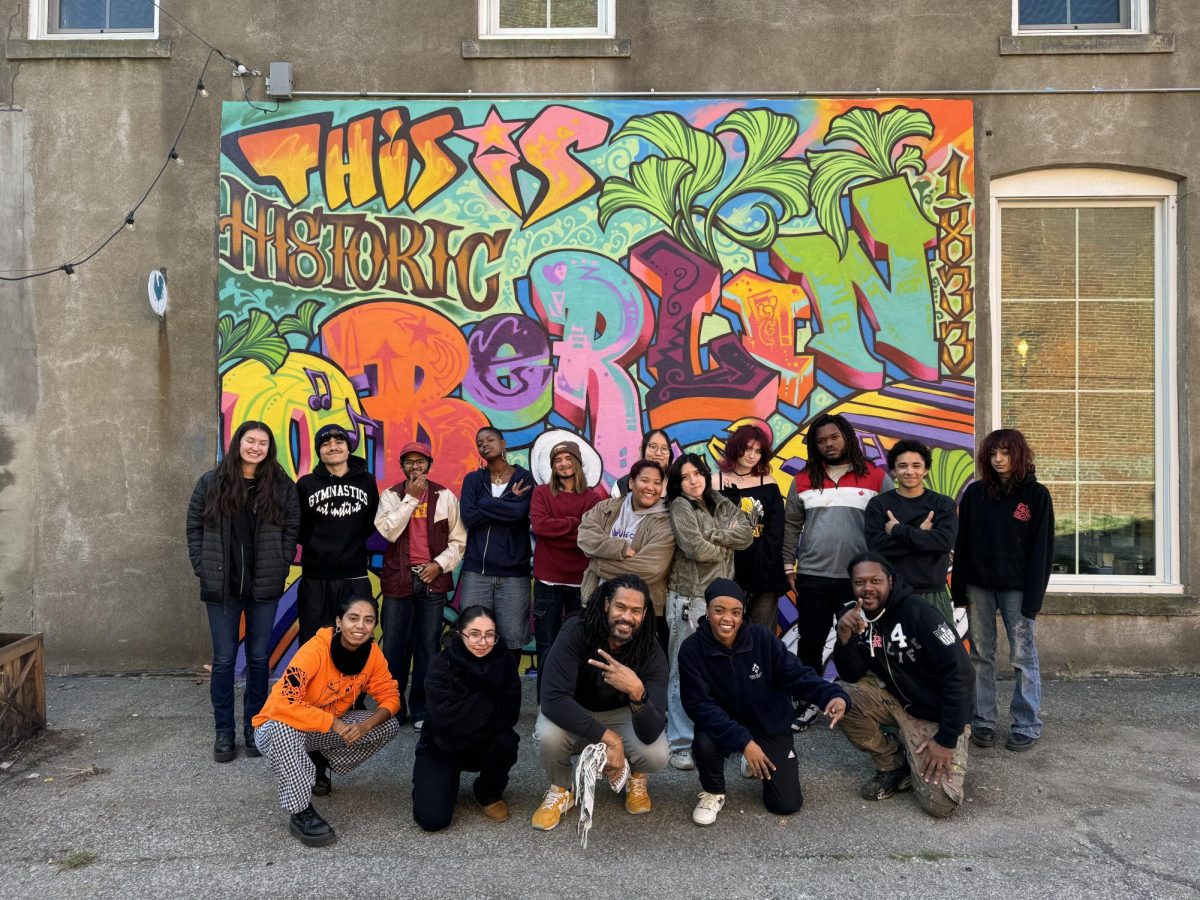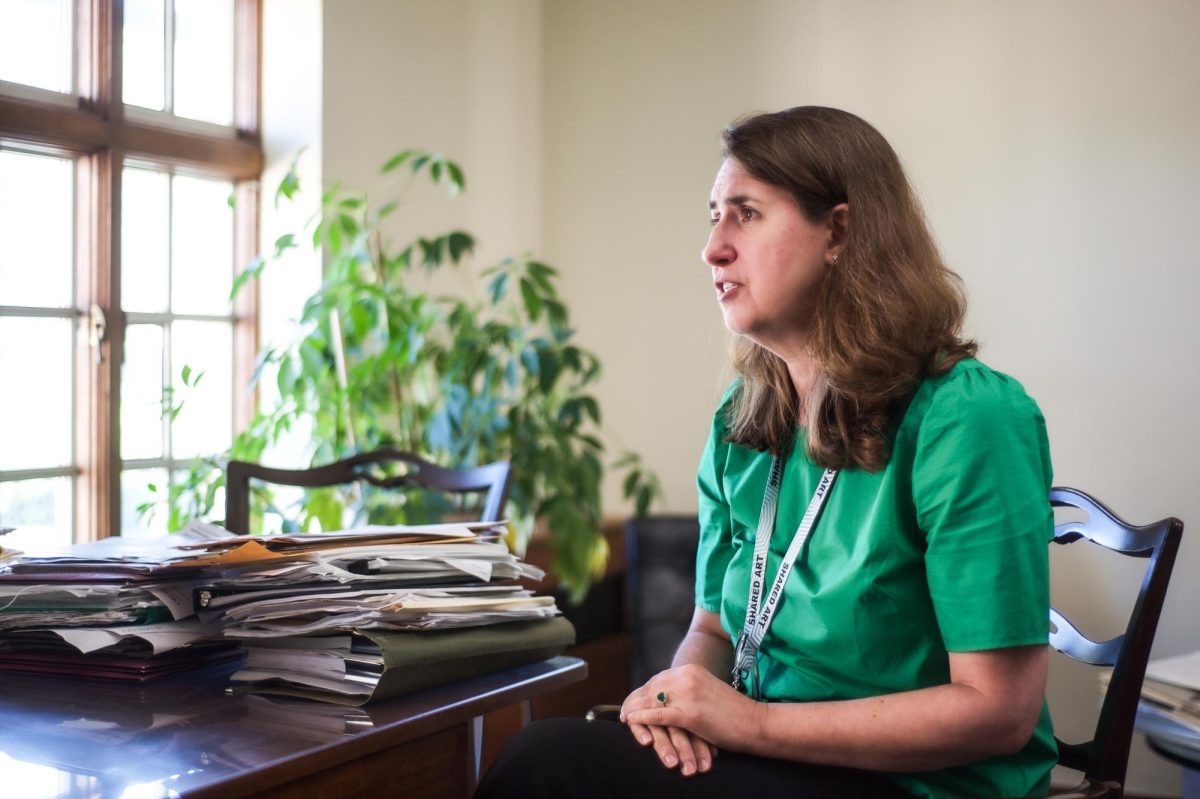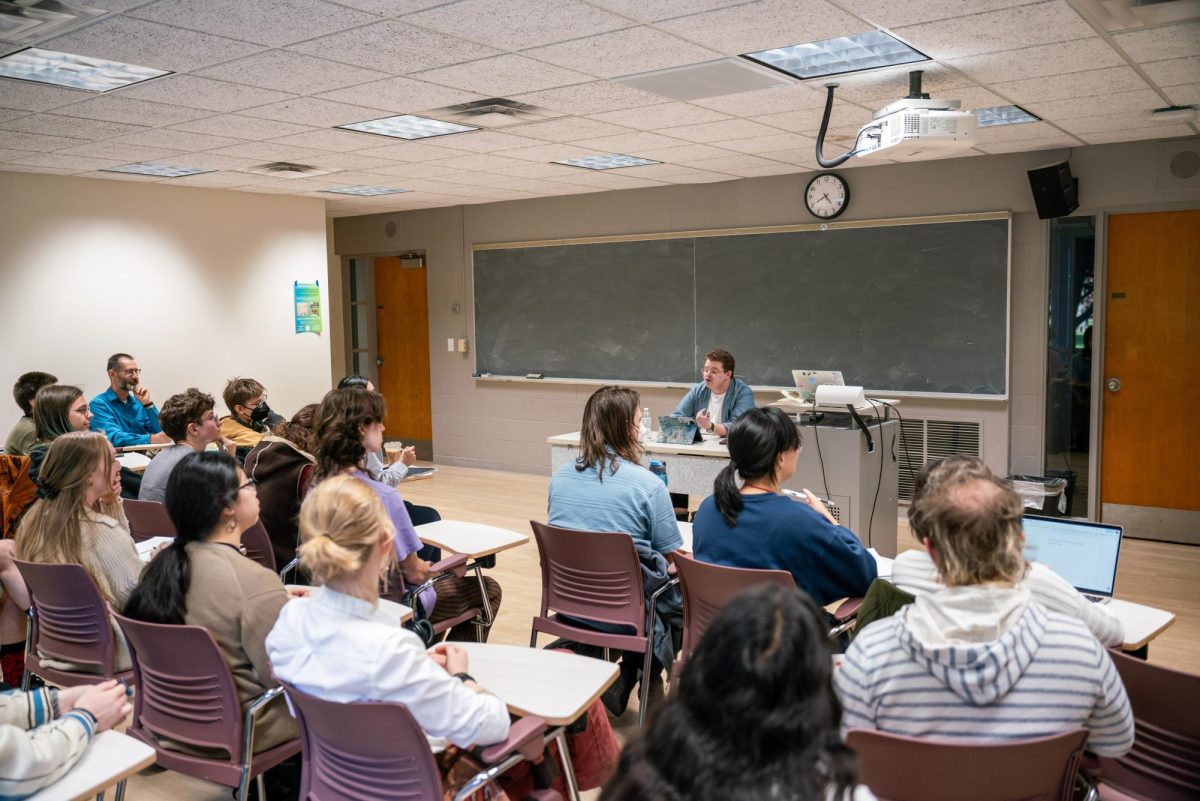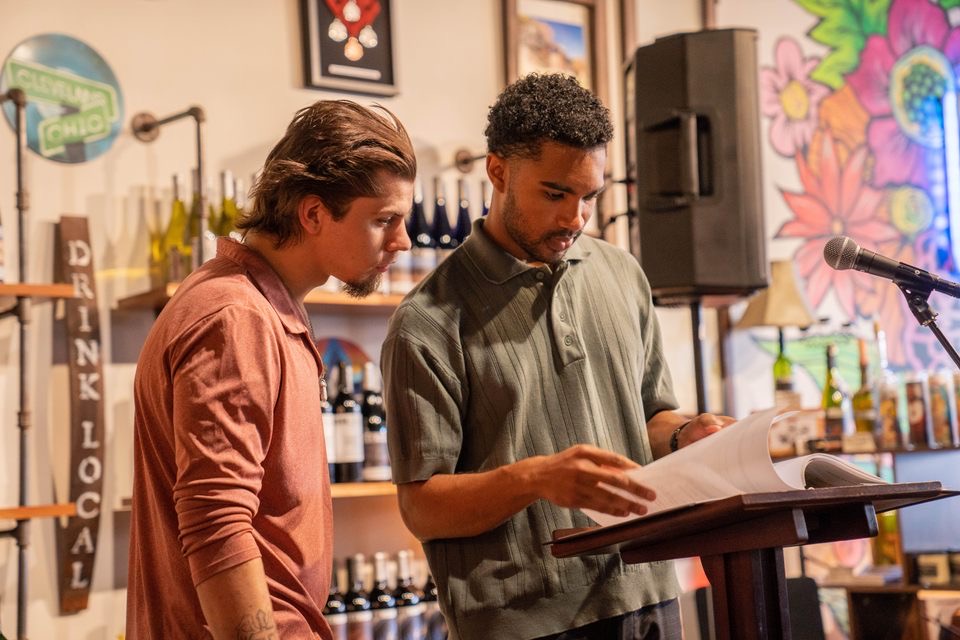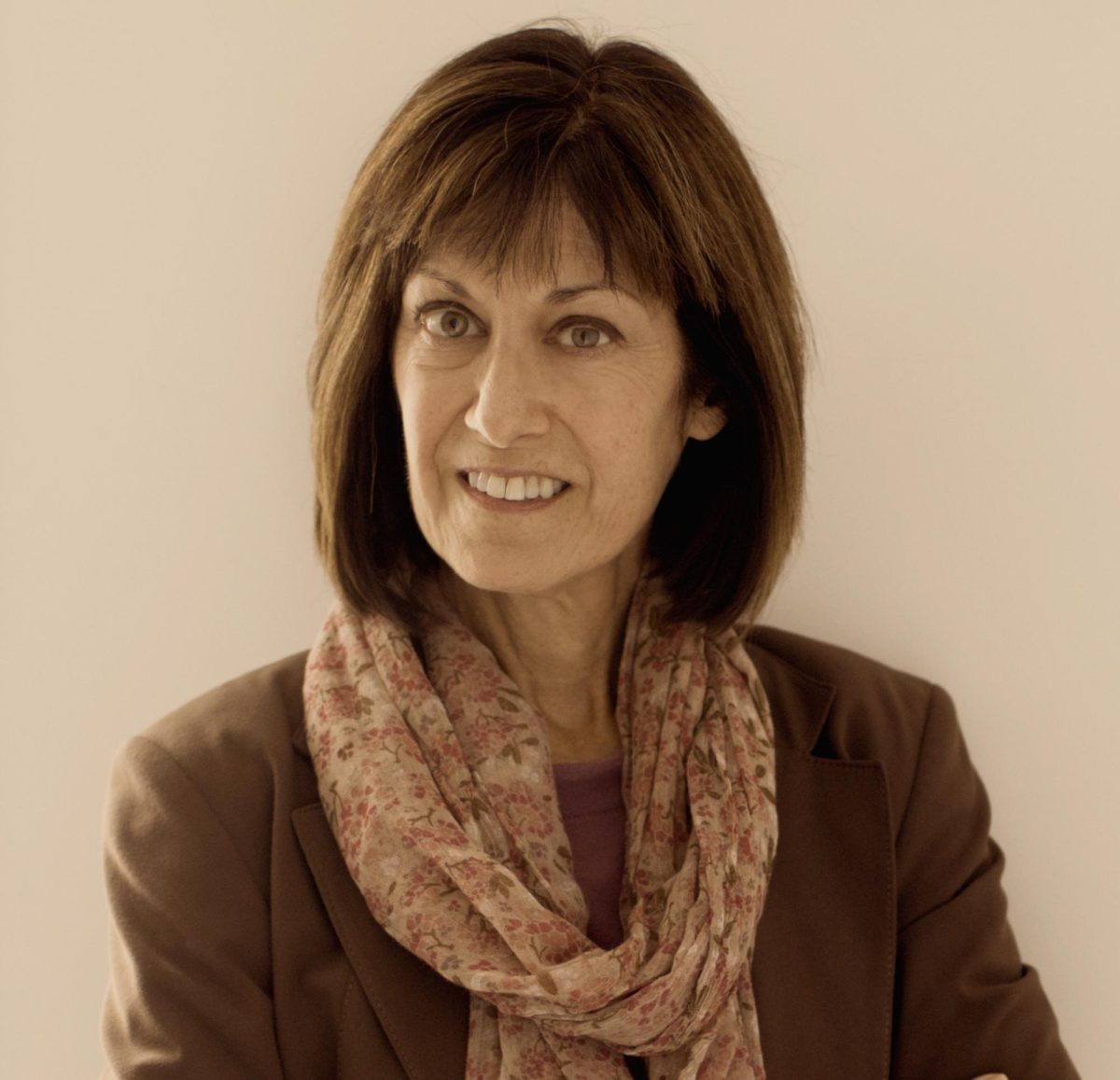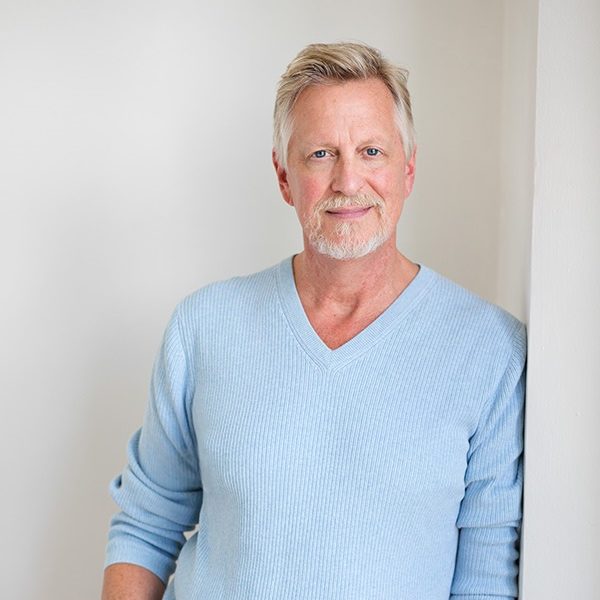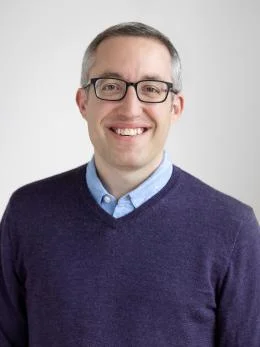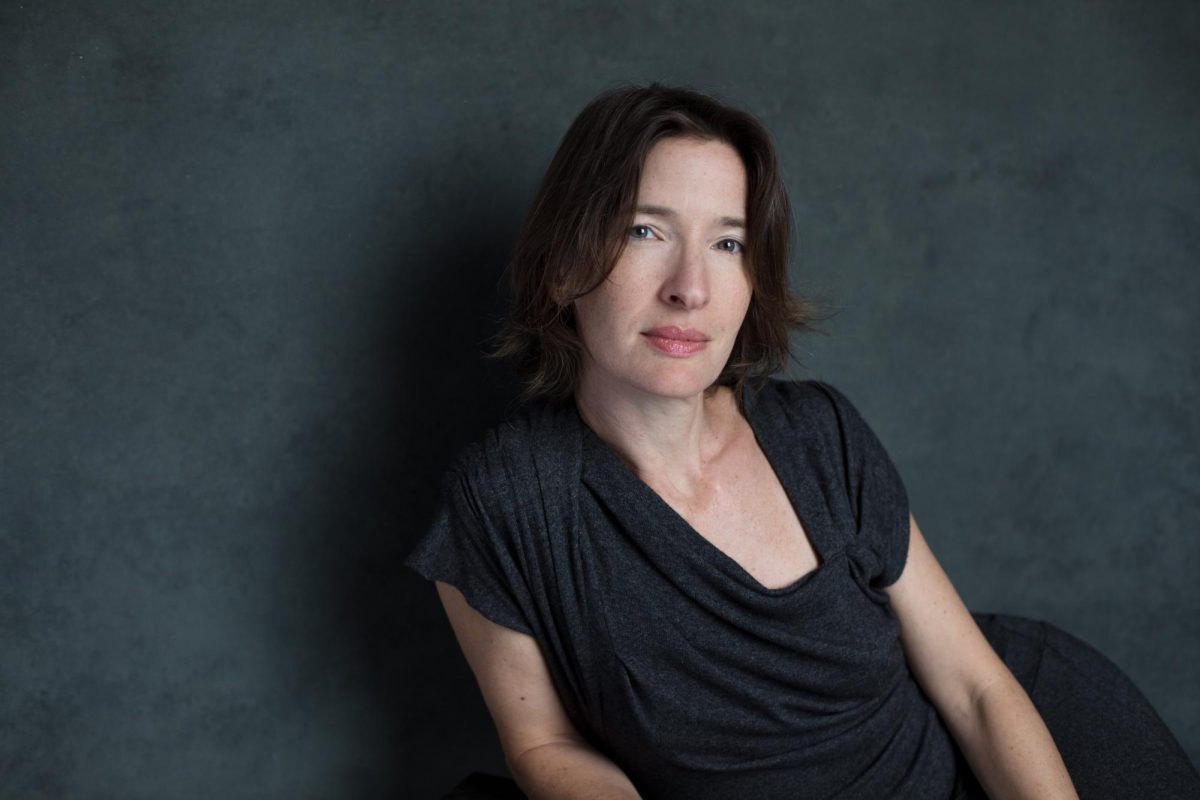Kari Barclay is a director, playwright, and assistant professor of Theater at Oberlin College. Barclay wrote and directed Stonewallin’, which was performed at Oberlin in spring 2023. Barclay has studied the rise of intimacy choreography for around seven years, and shares their thoughts and experiences in their recent book, Directing Desire.
This interview has been edited for length and clarity.
Could you give an overview of Directing Desire and talk about what intimacy choreography is?
Directing Desire looks at the rise of intimacy choreography, which is a field of work that attempts to choreograph scenes of romance and intimacy for the stage. Particularly since the #MeToo movement, there’s been a huge outburst in intimacy choreography. A lot of the book is exploring the language of consent, how consent is useful within the field, and what its limits are. It’s focused not only on consent agreement but also how to make the work artistically compelling. So, it’s thinking about what vocabulary consent gives us and what vocabulary beyond consent can also be useful for people.
How long have you been interested in intimacy choreography?
I began doing intimacy choreography work in my doctoral studies, so around seven years ago. At that point, I’d been doing a lot of theater for social justice work with survivors of sexual violence and was thinking a little more closely about how, as a director, I’m engaging with performers, because performance is an embodied relationship. Also as a playwright and director, I’ve been staging certain work around queer experience and asexuality. To talk about asexuality and queerness, I had to stage a lot of scenes with intimacy. I began training with some of the big organizations at the time and eventually went on to write my dissertation on the topic. Directing Desire is building on that research I was doing in the field, as well as being a practicing intimacy director.
In those seven years, how would you say the world of intimacy choreography and external views of that have changed?
It’s shifted a lot. The first amazing change is the way the work has really gotten traction and attention. It went from a practice that would get a goofy New Yorker article on it — like “What’s this weird new phenomenon in these fringe theaters in New York?” — up to the point where now you have a lot of mainstream publications about intimacy choreography. They even did a skit about it on Saturday Night Live with the cast of Bridgerton. So it’s blown up, which is an enormous change.
The second change is that intimacy choreography has gotten to think a lot more about intersectionality. In its early days, intimacy choreography was led by a lot of middle-aged, white women. The benefits of having intimacy choreographers who are cognizant of culture and identity include being able to choreograph scenes with sensitivity and with a knowledge of where a script is coming from. There’s been a huge shift in wanting to expand: to bring in more queer intimacy choreographers, intimacy choreographers of color, choreographers for disability, trans intimacy choreographers. It’s widening the field of thinking, not just about sexuality, but about what consent means.
What does a career in intimacy choreography look like?
When the #MeToo movement broke, there was a need for intimacy choreographers, especially in film and television networks. At that point, Hollywood was kind of known as the wild west of intimacy choreography. Because of that big demand, there was a rush to train people, and we’ve had this huge growth in organizations. There’s resources in film and television but far fewer in theater. It’s been interesting trying to lead some of this work at Oberlin, because the tough thing is, it’s hard. Most people are not able to make a living with intimacy choreography. Even my friends who are certified and very, very skilled are piecing it together by teaching or playwriting as well — just doing all sorts of different jobs in theater. Making a career just in intimacy choreography is very, very hard these days.
But I’ll say it’s been exciting here at Oberlin, being able to offer those courses in intimacy choreography. You’re not going to emerge from this class and suddenly be able to go out in the world and make a living, but you are able to bring those skills to whatever theater or film practice you’re doing afterwards. So if you’re an actor, you’re able to advocate in the rehearsal room. If you’re a director, you’re able to know how to work with an intimacy choreographer.
Looking at your work as a director, what project are you most proud of?
One of my proudest works, both as a playwright and director, is a play I wrote called Can I Hold You? This was around the same time that I was still learning intimacy choreography, and it was one of the first plays about asexuality ever produced in the United States. Asexuality is a queer identity that’s getting more and more attention these days, but back in 2018, representation was very scarce. And so I wrote this show, directed down at Stanford University, and we brought it up to San Francisco. The amazing thing was that every night, audience members would come up to me afterward and say, “Oh, I think this is my identity. I learned about it from the show.” It was really, really astonishing.
Do you have any creative projects going forward?
This March at the Cleveland Public Theater, I’m directing a workshop for a new play I wrote called How to Live in a House on Fire. It’s a play about how we navigate climate grief in the world we’re in now, and how we support each other in times of crisis. It jumps between two time periods. The first is 2020, out in California, in the East Bay, in the midst of a wildfire evacuation as an elderly couple in their 70s decides what to bring with them while they pack up their car. What would we need in an evacuation? What mementos? What items from our past are important? That transports them back to 1970 on the night they first met in a queer commune that’s part of queer history. So what from queer history do they want to take forward? And what potentially could they let burn? I’m really excited to be able to share that with the world.


